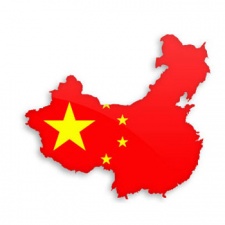When taking a game from the West to Asia developers must think globally but act locally, says Space Ape Games UA Associate Nasrin Chou.
Speaking at the UA Society Summit in London, Chou laid out the key differences between China, Japan, South Korea and Taiwan that Western developers should keep in mind when taking their games to the East.
Breaking down Asia markets
Chou said players in China have very low loyalty, but the mobile game market is made up of around 785 million users.
The low loyalty stems from the sheer number of games being released, she said. Average revenue per user (ARPU) is also low compared to other leading markets.
Japan has a mobile audience of 45.8 million with high ARPU. Chou said it is difficult to break into this market however because of its unique culture and closed environment, with many players often playing games developed locally.
She advised developers going into this market to advertise their gacha mechanics in their UA campaigns should their game have any, as this is hugely popular in Japan.
Chou said if you want to head into the Japanese market, you need to do serious localisation, not just in the game itself but also in the ad copy.
The South Korea mobile game audience is made up of around 40 million mobile game players. Chou called it an ‘Android paradise’ due to the operating system’s popularity there.
She said players in South Korea typically like MMORPGs, but tend to lean toward known IP they know.
Taiwan meanwhile has a smaller mobile gaming audience of 12.8 million mobile game players, but has very loyal users. Chou said While Chinese players can play up to ten games at once, users in Taiwan only play one to three games a week.
Adapting your UA campaign
Chou said most developers and publishers only directly localise captions on creatives to Chinese or other Asian languages. She stated however that Asian players can see this kind of translation immediately.
There are some simple changes developers can do when marketing their game however, such as using an art style and colour scheme that resonates with the local market.
For example, Japanese players like something that is soft, light, pale and/or light grayish. Chinese users prefer vivid, strong and bright colours, while South Korea like something strong, dull and dark.
She also said that if possible, using emoji in ad copy can catch the eye of Asian consumers given its popular use in the region in chat.
Peak seasons
Western developers also need to recognise the best times to promote their games in Asia countries, which can completely differ from the West.
Chou said that while Christmas works well in the West, in Asia, Summer is perhaps a better choice to run promotions in – though she warned against running promotions in May and June in China.
Chou also broke down the most popular chat platforms in different Asia markets, which can be used to promote games.
WeChat has 90% penetration in China, while Line has 59.6% penetration in Japan and 80% in Taiwain. Kakao is the most popular platform in South Korea, with 90% penetration.

















